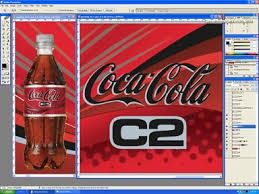Marketing Myopia
 The term Marketing Myopia was coined by Theodore Levitt in his research paper published in 1960 in Harvard Business Review (HBR) which suggested that businesses will succeed only if they give the customers what they want. The businesses should meet the customer’s needs, to succeed in market. A business live and dies by its customers and marketers don’t have a whole lot of room for errors to take care of them.
The term Marketing Myopia was coined by Theodore Levitt in his research paper published in 1960 in Harvard Business Review (HBR) which suggested that businesses will succeed only if they give the customers what they want. The businesses should meet the customer’s needs, to succeed in market. A business live and dies by its customers and marketers don’t have a whole lot of room for errors to take care of them.
Levitt appealed the marketers through his paper to have a broader view of market. He called the narrow view of marketers of not giving consideration to customer’s likes and dislikes Marketing Myopia. According to Levitt, narrow-mindedness of marketers leads to failure only. Complacency in terms of a product orientation – wherein marketers are more concerned with product quality, product precision and uniqueness of product and when all efforts go in making the product with distinct benefits, the customer direction is often lost. When marketers are infatuated with consistent product improvement and they typically believe that an ideal product will sell itself shows their shortsightedness.
 Similarly, when marketers concentrate on the manufacturing process keenly to make operational efficiencies and production optimization they tend to lose the customer focus; their key objective centers on production improvement processes. This orientation was prominent during the industrial era and in the capitalism period of the 1950s.
Similarly, when marketers concentrate on the manufacturing process keenly to make operational efficiencies and production optimization they tend to lose the customer focus; their key objective centers on production improvement processes. This orientation was prominent during the industrial era and in the capitalism period of the 1950s.
In the 1930’s, competition had increased to a great extent; the marketer’s basic focus remained on production precision and in many segments the demand remained unfulfilled. Automatically, firms started adopting sales orientation. When marketing idea rests only on the selling of goods or services which means when marketers concentrate only on pushing sales without really bothering to offer the products and services as per customer’s requirement the marketing focus is lost.
Levitt presented his viewpoints very accurately in his famous paper titled “Marketing Myopia” that contentment of the marketers in terms of product, production and sales is a pure illusion which can cause their failure in market. In my opinion Theodore Levitt was the original Marketing Guru; because this famous paper of Levitt marked the beginning of the modern marketing movement 54 years back. The concept is based on pragmatism. The paper was based on primary data collected from the oil companies. Levitt had redefined the oil companies business as “energy business” than just petroleum selling companies. The CEO’s of oil companies then started concentrating on vision and mission with a new spectrum.
One reason for the shortsightedness is due to unpredictability of the future. While this is a justifiable concern; in spite of a whole range of sales prediction techniques available in the market, the sales cannot be forecasted precisely. But, the other view point is that when the market changes, it offers more opportunities to marketers; though it is not easy to win the market by creating an entirely new product category. Therefore, concentrating on the offering as per the customer’s need in the initial stage is a must.
 In 2007, when Microsoft launched Windows Vista, the media and the public had high expectations. So did the company, which allotted $500 million for marketing research and predicted that 50% of users would run the premium edition within two years. But the software had so many compatibility and presentation problems that even Microsoft’s most loyal customers revolted. Vista flopped, and Apple’s Mac OS X desktop operating system clicked, causing many consumers to believe that Vista had even more problems than it did. Apple’s entry at the right time when market revolted against Vista gave it advantage of prohibiting Microsoft’s monopoly to a great extent.
In 2007, when Microsoft launched Windows Vista, the media and the public had high expectations. So did the company, which allotted $500 million for marketing research and predicted that 50% of users would run the premium edition within two years. But the software had so many compatibility and presentation problems that even Microsoft’s most loyal customers revolted. Vista flopped, and Apple’s Mac OS X desktop operating system clicked, causing many consumers to believe that Vista had even more problems than it did. Apple’s entry at the right time when market revolted against Vista gave it advantage of prohibiting Microsoft’s monopoly to a great extent.
The elements of a product such as core of the product – the ingredients, shape, size, color, design of product, the pricing and the packing of product matters. As the business moves through the stages of product development, in the initial stage itself an understanding of the product development strategy helps. Making a good or even superior product cannot ensure that anyone will buy it. But, understanding of market, and the understanding of what consumers want does help in positioning of the product on the right plank.
Two strong reasons for marketing myopia:
Lack of depth in understanding the target market: Marketers must know what makes their consumers buy their product. Which problems of their consumers need to be solved? Understanding the perceptions of the consumers helps in designing the products. This is not an easy task with most products. When products fail, it is difficult to pinpoint which customers’ i.e which segment caused its failure. It implies ‘everyone’, which in fact means no-one. ‘Everyone’ includes the entire distribution approach, promotional strategy and the after sales service strategy. For example, if the product is a medical product, then the chain includes the channel partner who sells the product, the hospital that buys it, the doctors who uses it and the patients who benefit from it. All of them are involved in failing the product. They are all involved, but each must be considered independently while deciding the strategy. All of these players have different needs. Each player’s need requires to be understood. A detailed dialogue with each one and a detailed observation of each one will make the job easy.
 Often marketing research is skewed when questions are not asked pin pointedly. When questionnaire is administered with blurred objectives the intent gets misunderstood. New products can take on a life of their own within an organization, becoming so hyped that there’s no turning back. Coca-Cola’s C2 (diet Coke) brand was a failure because of the fact that C2’s benefits weren’t distinctive enough. Coca-Cola identified a new market: 20 to 40 years old men who liked the taste of Coke excluding its calories and carbs and liked the no-calorie aspect of Diet Coke but they did not like its feminine image. C2, which had half the calories and carbs and all the taste of original Coke, was introduced in 2004 with a whooping $50 million advertising campaign. But, the product failed miserably due to skewed understanding of what customers really wanted. The budget couldn’t overcome rejection of the hybrid drink; the customers wanted full flavor with no calories or carbs, not half the calories and carbs. Friends, but the low-carb trend was short-lived. Positioning a product to leverage a fad is most common mistake made by marketers.
Often marketing research is skewed when questions are not asked pin pointedly. When questionnaire is administered with blurred objectives the intent gets misunderstood. New products can take on a life of their own within an organization, becoming so hyped that there’s no turning back. Coca-Cola’s C2 (diet Coke) brand was a failure because of the fact that C2’s benefits weren’t distinctive enough. Coca-Cola identified a new market: 20 to 40 years old men who liked the taste of Coke excluding its calories and carbs and liked the no-calorie aspect of Diet Coke but they did not like its feminine image. C2, which had half the calories and carbs and all the taste of original Coke, was introduced in 2004 with a whooping $50 million advertising campaign. But, the product failed miserably due to skewed understanding of what customers really wanted. The budget couldn’t overcome rejection of the hybrid drink; the customers wanted full flavor with no calories or carbs, not half the calories and carbs. Friends, but the low-carb trend was short-lived. Positioning a product to leverage a fad is most common mistake made by marketers.
Absence of value proposition in pricing: The exercise on pricing process by which a company adds value to a product or service includes designing of product, production, distribution, marketing, and the provision of after-sales service. The pricing is also based on how each participant is going to make money from the product and what precision each of them is going to lend in making the product valuable for the final consumer. This should be a formal process with a spreadsheet that quantifies the value proposition and commercial model. In 2004 P&G launched a scent “player” that looked like a CD player and emitted scents (contained on $5.99 discs with names like “Relaxing in the Hammock”) every 30 minutes. The company hired the singer Shania Twain for its launch commercials. This confused consumers, many of whom thought the device involved both music and scents, and the ambiguity caused failure of the product.
P&G lost heavily even because of its ambiguous pricing: hiring the celebrity singer, the advertisement campaign, the channel partner’s cost everything. When a product is truly revolutionary, it requires a special handling. A strong educational campaign of how to use the product perhaps would have helped in boosting the sales of the product. The pricing of the product was randomly misunderstood by the consumers.
 There are umpteen cases of product failures and product success; the fact remains that an organization needs to select and develop a product as per its target market’s taste, determine right price, select the ideal distribution channel to reach the place and develop and implement the right promotional strategy.
There are umpteen cases of product failures and product success; the fact remains that an organization needs to select and develop a product as per its target market’s taste, determine right price, select the ideal distribution channel to reach the place and develop and implement the right promotional strategy.
Organizations can avoid becoming myopic by listening to what the customers are saying; never stop evolving. Be mindful of new trends and remember those trends may live for long or die shortly. Keep adding new products to portfolio – practice self cannibalization, by doing so, they can enjoy bigger market share by gaining fresh frontiers. Listen to experts – be updated about new trends, new development on Internet – websites, blogs, micro blogs and industry analysis.













































